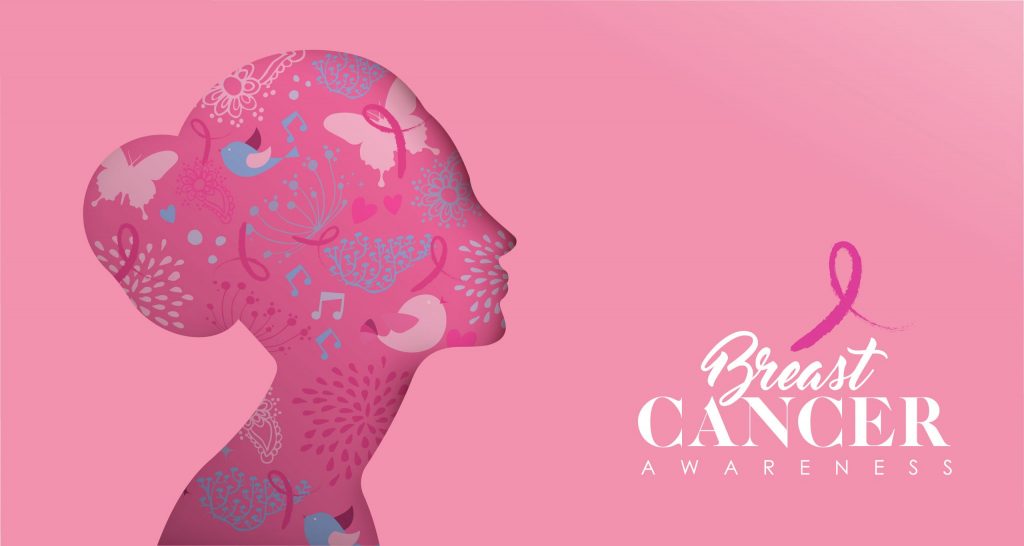
Dear Colleagues,
October is Breast Cancer Awareness Month. Breast cancer remains the second most common cancer in women in the United States. It is also the second most common cause of cancer death for women. The average risk of developing breast cancer in a woman’s lifetime is about 13%, amounting to a 1 in 8 chance a woman will develop breast cancer.1 The American Cancer Society estimates that almost 280,000 new cases of breast cancer (both invasive and in situ) will be diagnosed and an estimated 42,700 women will die from it this year.1
The patients we serve look to us to provide evidence-based breast cancer risk assessment, to recommend appropriate breast cancer screening, and to share information and answer questions in ways that are meaningful to them. As nurse practitioners providing women’s healthcare, we must ensure that patients have information about their personal risk factors, genetic risk assessment and access to testing/counseling when needed, risk reduction/screening measures to prevent cancer or find it at an early stage for women with hereditary breast cancer syndrome, and choices in breast cancer treatment. To do this, we must remain up to date on evidence-based guidelines. I recommend the National Comprehensive Cancer Network websiteA as a valuable resource for guidelines on breast cancer detection, prevention, risk reduction, and genetic/familial high-risk assessment. The website includes several useful clinical decision-making algorithms.
Our role in survivorship support and care cannot be overstated. Currently, there are more than 3.5 million US breast cancer survivors, including women still being treated and those who have completed treatment.1 The American Cancer Society/American Society of Clinical Oncology Breast Cancer Survivorship Care Guideline provides recommendations to assist primary care and other clinicians in the care of breast cancer survivors. The guideline covers surveillance for breast cancer recurrence, screening for second primary cancers, assessment and management of physical and psychosocial long-term and late effects of breast cancer and its treatment, health promotion, and care coordination/practice implications.2 Two articles in the February 2020 issue of this journal also provide insights into survivorship topics: “Caring for women on adjuvant therapy for breast cancer: Role of the NP in the primary care setting” and “Understanding contralateral prophylactic mastectomy decision-making in women with early-stage breast cancer: A nursing perspective.” These articles can be accessed here.B
As with many diseases, survivorship for women with breast cancer is not distributed with equity. Concerning disparities persist. Although Black women overall have a similar incidence of breast cancer compared with other races and ethnicities in the United States, they have a higher incidence before the age of 40 years and markedly higher death rates.1 Black women are more likely to be diagnosed at a later stage and less likely to receive stage-appropriate treatment. They also have a higher risk of poor-prognosis types of cancer (eg, estrogen receptor-negative tumors including triple-negative subtype). The reasons underlying these differences are not fully understood. In a thought-provoking article published in the journal Cancer, however, its authors provide a perspective on social-contextual factors that must be addressed to improve breast cancer prevention and risk reduction for Black women.3
It will take a concerted effort by clinicians in primary care and specialty breast health settings as well as researchers to bring the best evidence to practice that will reduce the incidence of breast cancer, reduce breast cancer death rates, and ensure that breast cancer survivors can live quality lives. I believe that knowledge and compassion are powerful tools we can use as we all strive to provide the best care for the patients we serve.

Beth Kelsey, EdD, APRN, WHNP-BC, FAANP
References
American Cancer Society. Breast Cancer Facts & Figures 2019-2020. Atlanta, GA: American Cancer Society; 2019. https://www.cancer.org/content/dam/cancer-org/research/cancer-facts-and-statistics/breast-cancer-facts-and-figures/breast-cancer-facts-and-figures-2019-2020.pdf.
Runowicz CD, Leach CR, Henry NL, et al. American Cancer Society/American Society of Clinical Oncology Breast Cancer Survivorship Care Guideline. CA Cancer J Clin. 2016;66(1):43-73.
Williams DR, Mohammed SA, Shields AE. Understanding and effectively addressing breast cancer in African American women: unpacking the social context. Cancer. 2016;122(14):2138-2149.
Web resources
A. nccn.org/professionals/physician_gls/default.aspx#detection

